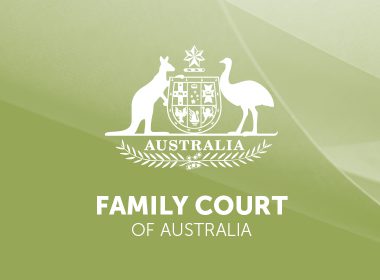Key decisions
- Isles & Nelissen [2022] FedCFamC1A 97
- Barrett & Winnie [2022] FedCFamC1A 99
- Qian & Xue [2022] FedCFamC1A 93
- Chan & Lee [2022] FedCFamC1A 85
CHILDREN
Assessment of unacceptable risk is a predictive exercise that includes mere possibilities
In Isles & Nelissen [2022] FedCFamC1A 97 (1 July 2022), the Full Court (Alstergren CJ, McClelland DCJ, Aldridge, Austin & Tree JJ) dismissed a father’s appeal from orders made by McGuire J that four children live with the mother and spend supervised time with the father.
The father had been charged with rape of the eldest child in criminal proceedings that had been discontinued for ‘lack of specificity’ in the evidence (at [63]).
McGuire J found he could not make a specific finding of sexual abuse but found the father presented an unacceptable risk of harm.
The Full Court noted cases had gone so far as to posit that (from [6]):
‘[T]he risk of … abuse … must be proven on the balance of probabilities according to the civil standard of proof … We consider that statement of principle to be incorrect …
[7] [I]t is an oxymoron to expect … possibilities to … be forensically proven on the balance of probabilities … By definition, possibilities are not, and could never be, probabilities.
[56] [T]he principles enunciated in M v M (1988) 166 CLR 69 about “unacceptable risk” were woven into the fabric of family law in instances of alleged actual and prospective child sexual abuse. The Full Court later extended such principles to cases involving allegations of children being at risk of physical or emotional harm for other reasons (A v A [1998] FamCA 25).
[59] The provisions of the Act are [now] wide enough to embrace most, if not all, assertions of an “unacceptable risk” of harm … and so it is preferable for litigants to conduct their parenting disputes by reference to the express provisions of the Act.
[85] The assessment of risk is an evidence-based conclusion and is not discretionary. … The finding about whether an unacceptable risk exists, based on known facts and circumstances, is either open on the evidence or it is not. It is only the overall judgment … which entails an exercise of discretion.’
PROPERTY
Trust property excluded from asset pool – despite her role as appointor, wife never had control of the trust
In Barrett & Winnie [2022] FedCFamC1A 99 (1 July 2022), the Full Court (McClelland DCJ, Baumann & Hartnett JJ) dismissed with costs a husband’s appeal against a decision of Kent J declining to make property adjustment orders in the context of a 14 year marriage.
Following their separation, there was an informal settlement whereby the husband demanded and received the wife’s interest in a jointly owned property (at [91]). The wife was also removed as appointor of a trust called ‘the Winnie Family Trust’ in February 2008 (at [100]).
The husband unsuccessfully sought to set the wife’s removal aside pursuant to s 106B. Kent J excluded the trust’s property from the matrimonial asset pool, finding that the husband already retained property, 95.61 per cent of the existing net asset pool.
The Full Court said (from [99]):
‘The … judge accepted the evidence of … [the] respondents as to the adverse impacts of the … global financial crisis … The … judge accepted the evidence that … the … respondents … took effective action including by way of selling properties at a loss. … [T]he … judge found that a substantial part of the asset base that currently exists in the trusts … accrued in the period subsequent to the global financial crisis and … post the separation of the parties to the marriage.
[137] [T]he … judge found, as a matter of fact, that the Winnie Family Trust had never operated as or been treated as the alter ego of the [wife].
[145] [T]he … judge … appropriately had regard to the interests of other third parties and the significant contributions that they made to the trust property in determining whether it was appropriate to exercise his discretion to set aside the Deed.
[155] [T]he judge, appropriately … excluded the trust property from the property pool but had regard to the trust assets as being a significant financial resource available to the [wife] …’


